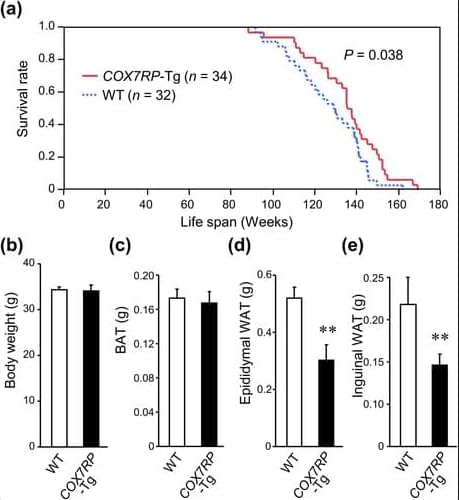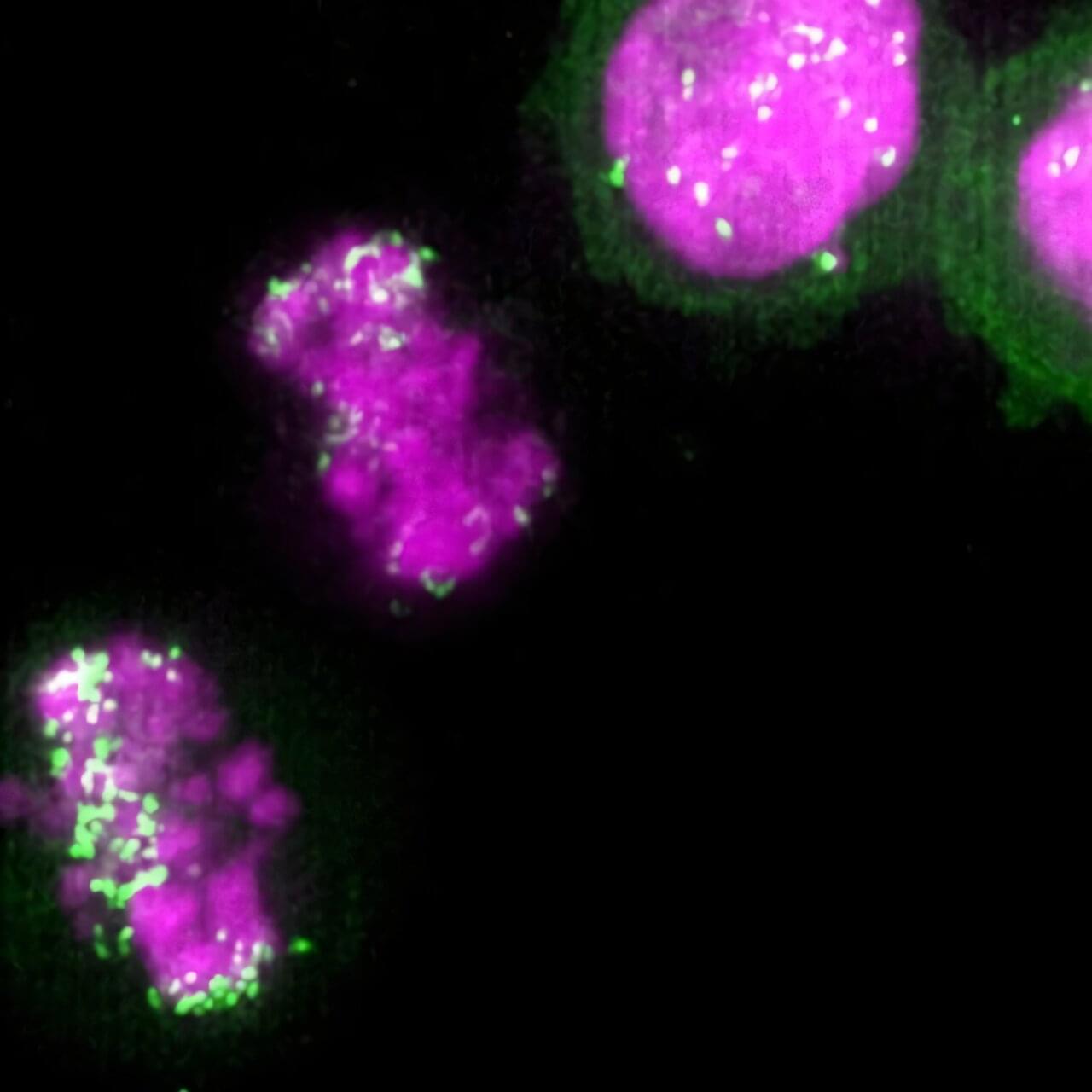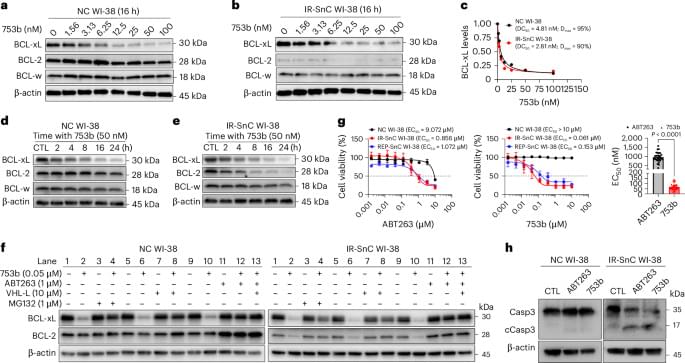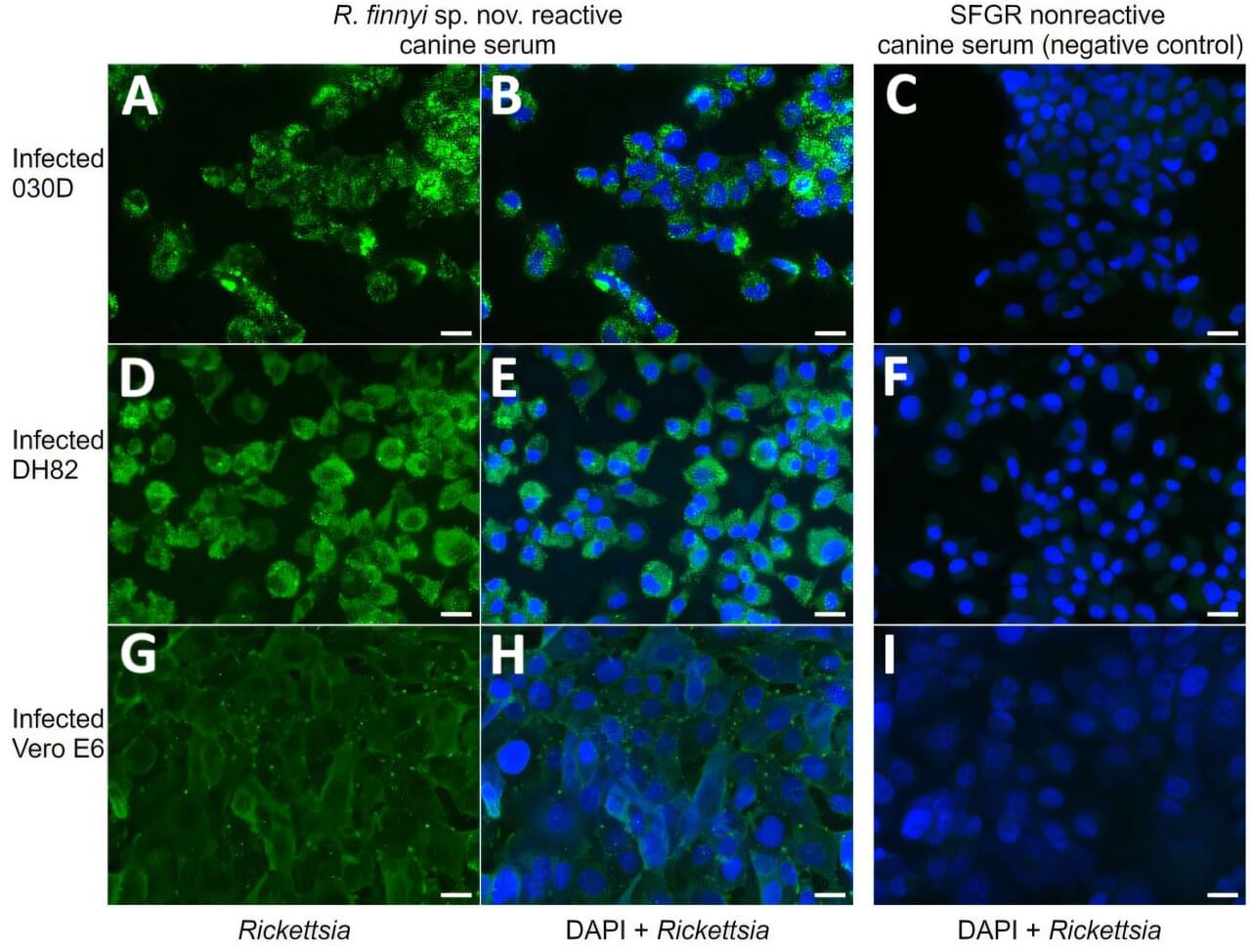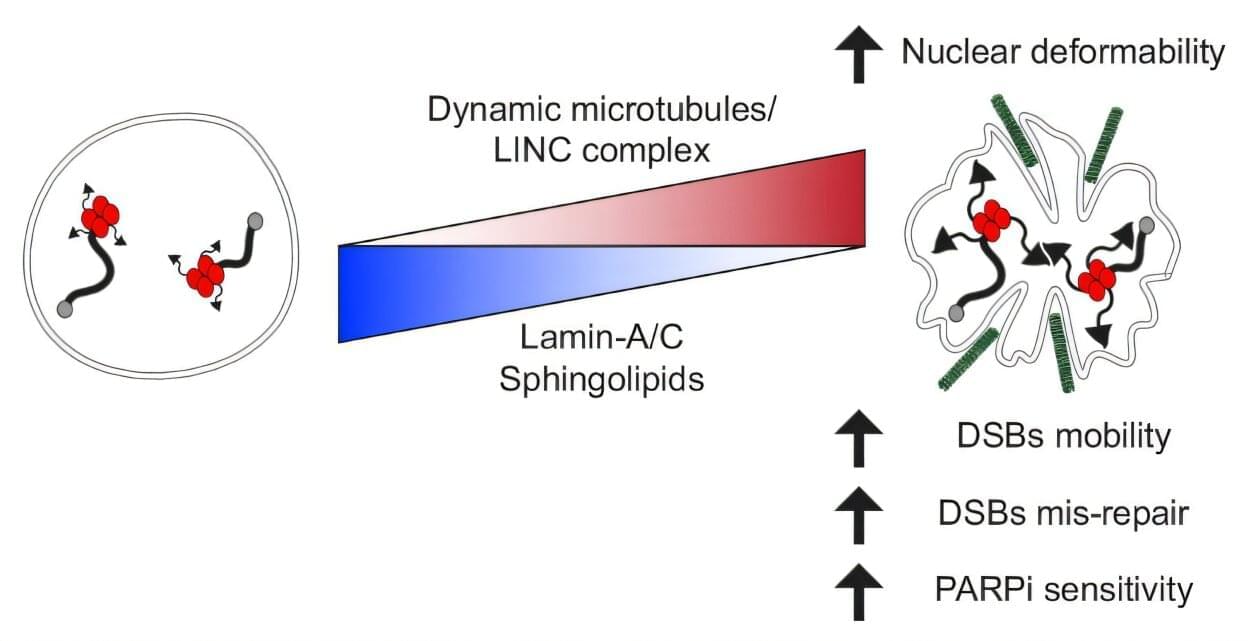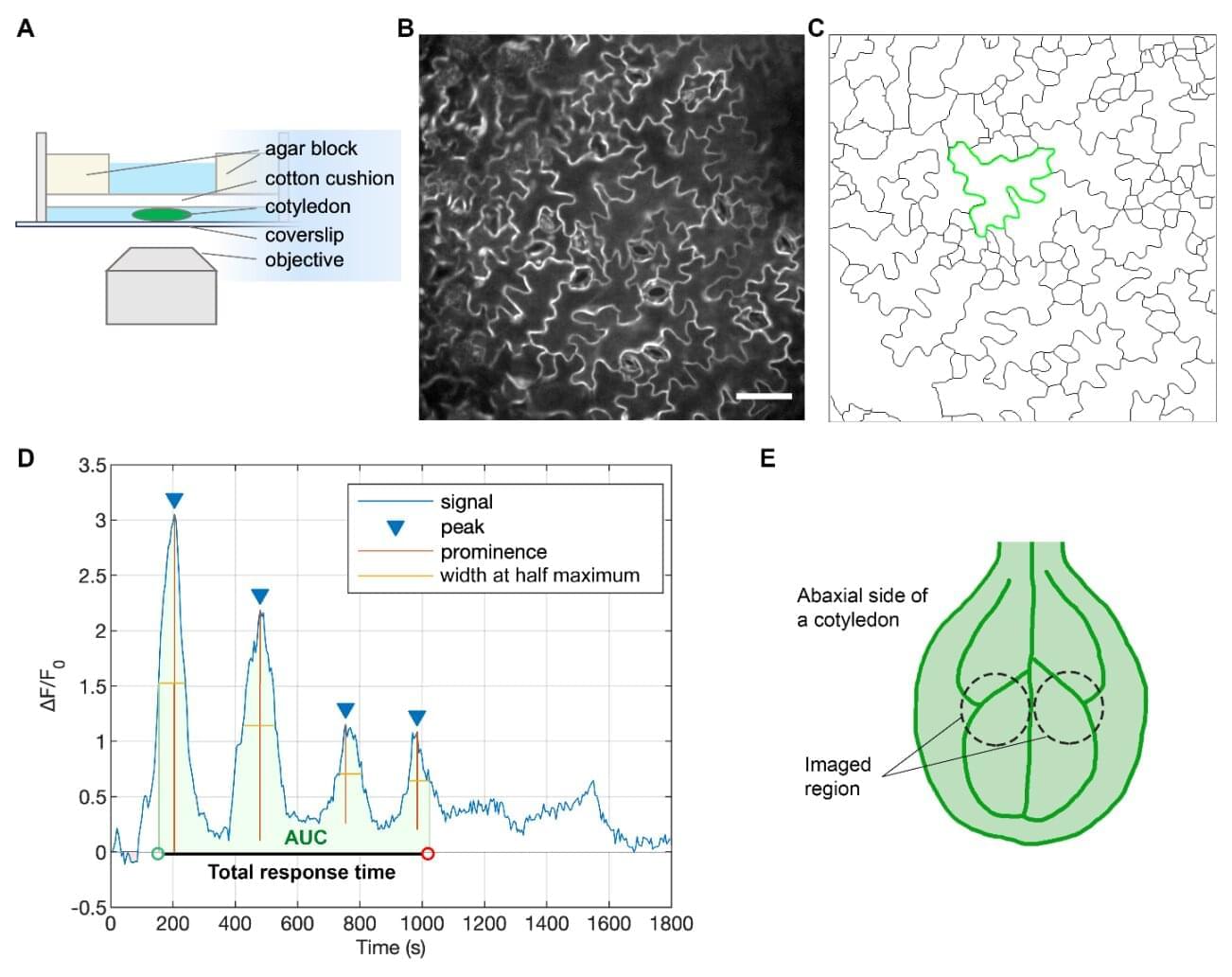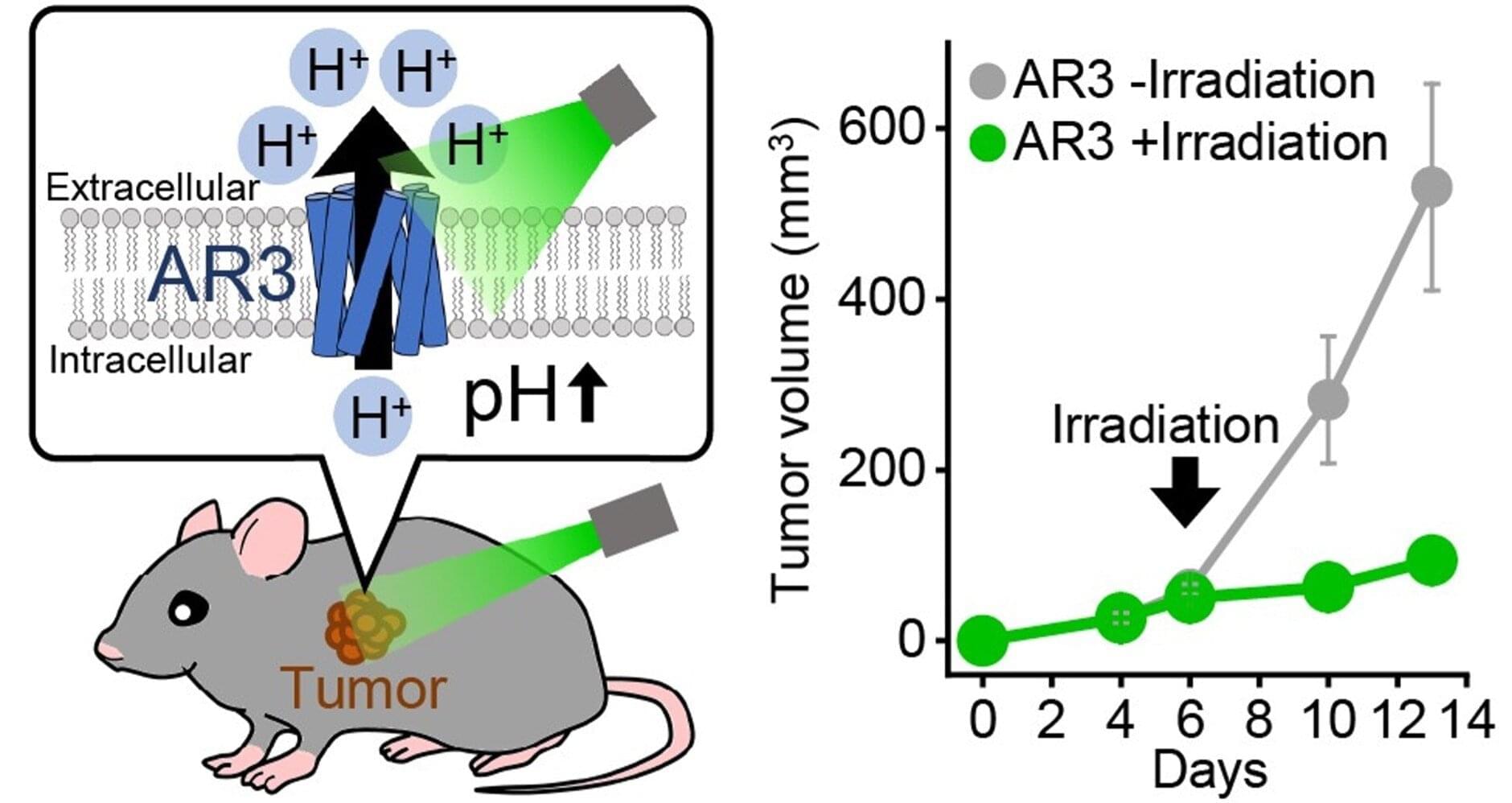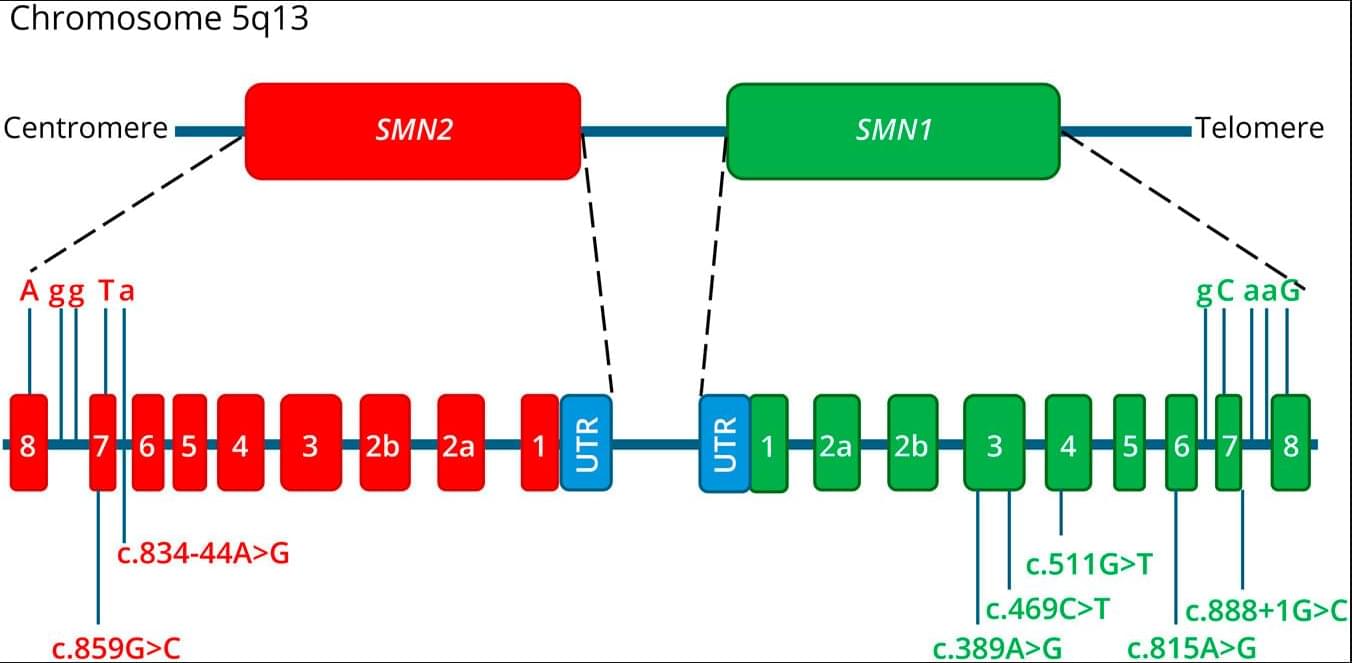COX7RP is a critical factor that assembles mitochondrial respiratory chain complexes into supercomplexes, which is considered to modulate energy production efficiency. Whether COX7RP contributes to metabolic homeostasis and lifespan remains elusive. We here observed that COX7RP-transgenic (COX7RP-Tg) mice exhibit a phenotype characterized by a significant extension of lifespan. In addition, metabolic alterations were observed in COX7RP-Tg mice, including lower blood glucose levels at 120 min during the glucose tolerance test (GTT) without a significant difference in the area under the curve (AUC), as well as reduced serum triglyceride (TG) and total cholesterol (TC) levels. Moreover, COX7RP-Tg mice exhibited elevated ATP and nicotinamide adenine dinucleotide levels, reduced ROS production, and decreased senescence-associated β-galactosidase levels. Single-nucleus RNA-sequencing (snRNA-seq) revealed that senescence-associated secretory phenotype genes were downregulated in old COX7RP-Tg white adipose tissue (WAT) compared with old WT WAT, particularly in adipocytes. This study provides a clue to the role of mitochondrial respiratory supercomplex assembly factor COX7RP in resistance to aging and longevity extension.
